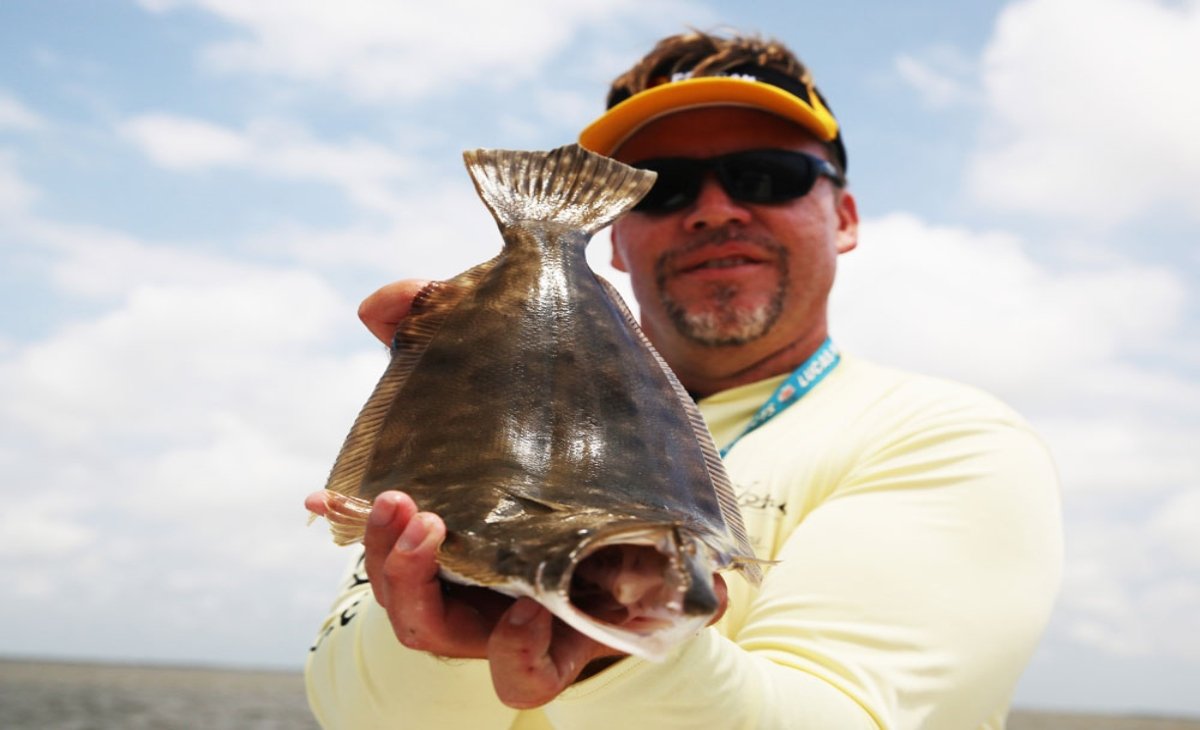Fishing enthusiasts and marine biologists alike hold the fluke fish in high regard. Known for its unique appearance and thrilling catch experience, the fluke fish has become a staple in both commercial and recreational fishing. From its habitat preferences to catching techniques, understanding fluke fish offers an intriguing glimpse into marine life and sports fishing. In this article, we’ll dive deep into the world of fluke fish, ensuring you leave with the expertise needed to not only appreciate but also expertly pursue this fascinating species.
Understanding Fluke Fish
Fluke fish, commonly referred to as summer flounder, belong to the flatfish family. Their remarkable flat, oval-shaped body allows them to camouflage perfectly with the sandy or muddy ocean floors. The fluke fish’s scientific name is Paralichthys dentatus, which translates to “parallel fish with teeth,” a nod to its flattened shape and distinct dentition. Primarily found in the Atlantic Ocean, fluke fish exhibit a variety of behaviors and traits that set them apart from other flatfish.
You May Also Like: Pollaste: A Healthy and Versatile Poultry Option
The Natural Habitat of Fluke Fish
Fluke fish prefer coastal waters, especially shallow sandy bottoms and estuaries during the warmer months. As temperatures cool, they migrate to deeper offshore waters. This seasonal migration pattern is crucial for anglers to understand, as it dictates the best times and locations to fish for them. Notably, fluke fish are bottom dwellers, spending most of their lives lying camouflaged against the ocean floor.
Identifying a Fluke Fish
Identification of a fluke fish is relatively straightforward once you know what to look for. Fluke fish have both eyes on the left side of their body, a trait shared with other members of the flounder family. Their coloration varies from brown to greyish tones with occasional spots that aid in camouflage. Their sharp teeth and large mouth are adapted for ambushing prey, making them effective predators.
Life Cycle and Growth of Fluke Fish
The life cycle of fluke fish is fascinating. They begin life in a symmetrical form, but as they mature, one eye migrates to the other side of their head. Juveniles start in shallow nursery areas where they are protected from larger predators. As they grow, fluke fish move into deeper waters. A mature fluke fish can reach lengths of up to 26 inches and weigh as much as 15 pounds, though the average size caught by anglers is around 14 inches.
Diet and Feeding Behavior of Fluke Fish
Fluke fish are opportunistic feeders, consuming a variety of smaller fish, shrimp, squid, and other invertebrates. Their predatory technique involves remaining motionless on the seabed, blending seamlessly into the background before launching a sudden attack on unsuspecting prey. This ambush strategy is supported by their excellent camouflage and explosive speed.
Why Anglers Love Fluke Fish
Sport fishermen prize fluke fish for their fighting spirit and delectable taste. When hooked, a fluke fish offers a thrilling battle, often involving quick, jerky movements and stubborn resistance. In addition, their mild, flaky meat is considered a culinary delicacy, making them a sought-after species among those who enjoy seafood.
Best Seasons to Catch Fluke Fish
Timing is critical when fishing for fluke fish. The prime season typically runs from late spring through early autumn. During this period, fluke fish migrate into shallow waters to feed and spawn, increasing their accessibility to shore-based and boat anglers alike. Winter sees fluke moving offshore into deeper, colder waters where they are much harder to catch.
Top Locations for Fluke Fish
The Atlantic coastline, stretching from North Carolina to Massachusetts, offers prime fluke fishing grounds. Renowned hotspots include New Jersey’s coastal waters, Long Island Sound, and the Chesapeake Bay. Each of these locations provides the sandy bottom habitat that fluke fish favor, ensuring higher chances of a successful catch.
Essential Gear for Fluke Fish Fishing
When targeting fluke fish, having the right gear is crucial. Medium-action spinning rods paired with reels capable of handling braided or fluorocarbon lines are recommended. Jigs and bucktails are popular lures, often tipped with squid strips or other natural baits to entice strikes. A fish finder can also greatly improve success rates by locating schools and underwater structures.
Best Techniques for Catching Fluke Fish
Drift fishing is arguably the most effective method for catching fluke fish. By allowing the boat to drift over productive fishing grounds, anglers can cover more area and present baits naturally. Bounce jigging, where the bait is gently bounced along the bottom, mimics the movement of prey and often triggers aggressive bites.
Tips for Maximizing Your Fluke Fish Catch
Patience and adaptability are keys to successful fluke fishing. If bites are scarce, changing the color of your lure or varying your jigging speed can make a big difference. Pay attention to the tides, as fluke fish are more active during incoming or outgoing tides. Additionally, targeting drop-offs, channels, and underwater structures increases your odds.
Common Mistakes to Avoid When Fishing for Fluke Fish
Many anglers make the mistake of setting the hook too quickly. Given the fluke fish’s method of biting, it is often better to wait for a second, firmer tug before setting the hook. Another common error is using overly heavy tackle, which can make it difficult to detect subtle bites.
Regulations and Conservation Efforts for Fluke Fish
Regulatory bodies have established size and bag limits to prevent overfishing and ensure sustainable populations. In most areas, the minimum legal size for fluke fish is around 18 inches, but this can vary by location and season. Catch and release practices are also encouraged, especially for undersized or out-of-season fish.
How Climate Change Affects Fluke Fish Populations
Climate change poses a significant threat to fluke fish. Rising ocean temperatures have prompted shifts in distribution, with fluke fish being found farther north than traditionally observed. This can affect local fishing industries and the balance of marine ecosystems where fluke fish are an integral part.
Cooking and Preparing Fluke Fish
Fluke fish offer a mild, sweet flavor that lends itself to a variety of cooking methods. Grilling, baking, and pan-frying are popular choices. Fluke fillets are often used in dishes like fish tacos, ceviche, and lightly battered fish and chips. Given their lean nature, care should be taken not to overcook them.
Health Benefits of Eating Fluke Fish
Consuming fluke fish provides a range of health benefits. They are a rich source of lean protein, omega-3 fatty acids, and essential vitamins like B12 and D. Regular consumption supports heart health, brain function, and overall wellness, making fluke fish a nutritious addition to any diet.
Best Recipes for Cooking Fluke Fish
Fluke fish shines brightest in simple recipes that allow its natural flavor to take center stage. A favorite among chefs is grilled fluke seasoned with lemon, herbs, and a touch of olive oil. For a more elaborate dish, fluke fish stuffed with crab meat and breadcrumbs makes a show-stopping entrée. Ceviche, made by marinating thin slices of fluke fish in citrus juices, highlights its delicate texture and fresh taste. No matter the preparation, fluke fish’s versatility ensures a satisfying meal.
Interesting Facts About Fluke Fish
One fascinating fact about fluke fish is their ability to change color to blend in with their surroundings. This camouflage is so effective that predators and prey often fail to detect them until it’s too late. Another interesting point is their migratory behavior. Some fluke fish travel over 100 miles between their summer and winter habitats. Additionally, despite their seemingly lazy demeanor lying on the sea floor, they are capable of rapid bursts of speed when chasing prey or avoiding threats.
How to Choose Fresh Fluke Fish
Choosing the freshest fluke fish is crucial for both taste and safety. Look for fillets that are translucent and moist, never dry or discolored. Whole fluke fish should have clear, bulging eyes and a mild, ocean-like smell. If you’re purchasing from a market, do not hesitate to ask when the fish was caught and whether it was kept properly chilled. Fresh fluke fish promises a far superior culinary experience compared to older, improperly handled fish.
Historical Significance of Fluke Fish
Fluke fish have been harvested for centuries, first by indigenous peoples along the Atlantic coast who relied heavily on marine resources for sustenance. Later, colonial settlers developed commercial fluke fisheries that played a key role in regional economies. Today, fluke fishing remains a vital part of coastal communities, supporting livelihoods and cultural traditions centered around the sea.
Cultural References and Symbolism of Fluke Fish
In coastal folklore, fluke fish often symbolize adaptability and resourcefulness. Their ability to blend into diverse environments mirrors the traits admired in resilient communities living by the sea. Additionally, fluke fish feature prominently in local festivals and cooking contests in towns from New Jersey to Massachusetts, underscoring their cultural importance.
Fluke Fish in Modern Fisheries Management
Fisheries management agencies closely monitor fluke fish populations using quotas, size limits, and seasonal closures. Modern efforts emphasize sustainable fishing practices, ensuring that fluke fish continue to thrive despite environmental pressures. Collaboration between fishermen, scientists, and regulators helps maintain healthy stocks, benefiting both the ecosystem and the economy.
Challenges Facing Fluke Fish Populations
Besides climate change, fluke fish face challenges from habitat destruction and bycatch. Dredging activities and pollution can destroy the sandy habitats that fluke fish rely upon. Meanwhile, non-targeted fishing methods sometimes inadvertently capture juvenile fluke fish, stressing populations. Addressing these issues requires a multifaceted approach including stricter regulations, habitat restoration, and improved fishing techniques.
Future Outlook for Fluke Fish
Despite current challenges, the future for fluke fish remains optimistic if conservation measures continue. Increasing public awareness, advances in fisheries science, and adaptive management strategies offer hope that fluke fish will remain a vibrant part of the marine landscape for generations to come. Education and responsible fishing practices are crucial components in securing this future.
How to Practice Ethical Fishing for Fluke Fish
Ethical fluke fishing involves more than simply obeying regulations. Anglers should practice catch-and-release methods for undersized or unwanted fish, handle fish carefully to minimize harm, and use circle hooks to reduce injury. Supporting sustainable seafood initiatives also helps protect fluke fish populations, ensuring that fishing remains an enjoyable and viable activity.
Comparing Fluke Fish to Other Flatfish Species
While fluke fish share characteristics with other flatfish like flounder and halibut, they have distinct differences. Fluke fish typically have larger mouths and more pronounced teeth compared to their counterparts. They also tend to be more aggressive feeders, making them particularly thrilling targets for anglers. Their coloration and body shape are adapted specifically for the Atlantic’s sandy seabeds, whereas other flatfish may prefer different substrates.
Best Time of Day to Catch Fluke Fish
Fluke fish are most active during tidal changes, particularly during the early morning and late afternoon. Overcast days can also produce excellent fishing conditions, as the reduced light encourages fluke to move into shallower waters to hunt. Monitoring tide charts and planning fishing trips around these peak activity periods can dramatically improve your success rates.
Seasonal Differences in Fluke Fish Behavior
Springtime fluke fish are generally smaller and more plentiful in shallow waters, while summer brings larger, trophy-sized individuals closer to shore. By autumn, many fluke fish start their migration back into deeper waters, becoming less accessible. Understanding these seasonal behavioral shifts allows anglers to adjust their techniques and target the biggest, most elusive specimens.
The Economic Importance of Fluke Fish
The fluke fishery represents a multi-million-dollar industry along the Atlantic seaboard, providing jobs not only for fishermen but also for processors, restaurants, and tourism operations. Charter boats specializing in fluke fishing attract thousands of tourists each year, boosting local economies in coastal towns and cities.
Technological Advances in Fluke Fish Tracking
Modern tracking methods, including satellite tagging and underwater drones, have revolutionized our understanding of fluke fish behavior. These technologies reveal detailed migration patterns, spawning areas, and habitat preferences. Such insights are invaluable for shaping effective management policies and ensuring the continued health of fluke fish populations.
Fluke Fish in Aquaculture
While still in its infancy, fluke fish aquaculture shows promise as a sustainable seafood source. Researchers are exploring methods to breed fluke fish in captivity, potentially easing the pressure on wild stocks. Challenges remain, but the early results are encouraging and could represent a significant development in sustainable seafood practices.
Fluke Fish
Fluke fish capture the imagination with their unusual body shape, clever camouflage, and fierce fighting spirit. Whether you are a seasoned angler looking for a new challenge, a chef seeking the perfect flaky fish, or a conservationist interested in marine ecosystems, fluke fish offer something for everyone. Their continued survival and abundance rely on responsible fishing practices, informed management, and public awareness. As we move forward, the fluke fishery will undoubtedly remain a cherished icon of Atlantic marine life.
Conclusion
Fluke fish stand as a testament to the beauty and complexity of marine life. From their camouflaging abilities to their thrilling battles at the end of a fishing line, they offer endless fascination. With sustainable practices and a commitment to conservation, we can continue to enjoy fluke fish both in the ocean and on our plates for years to come. Every angler, chef, and ocean lover can play a part in preserving the legacy of these magnificent creatures.








